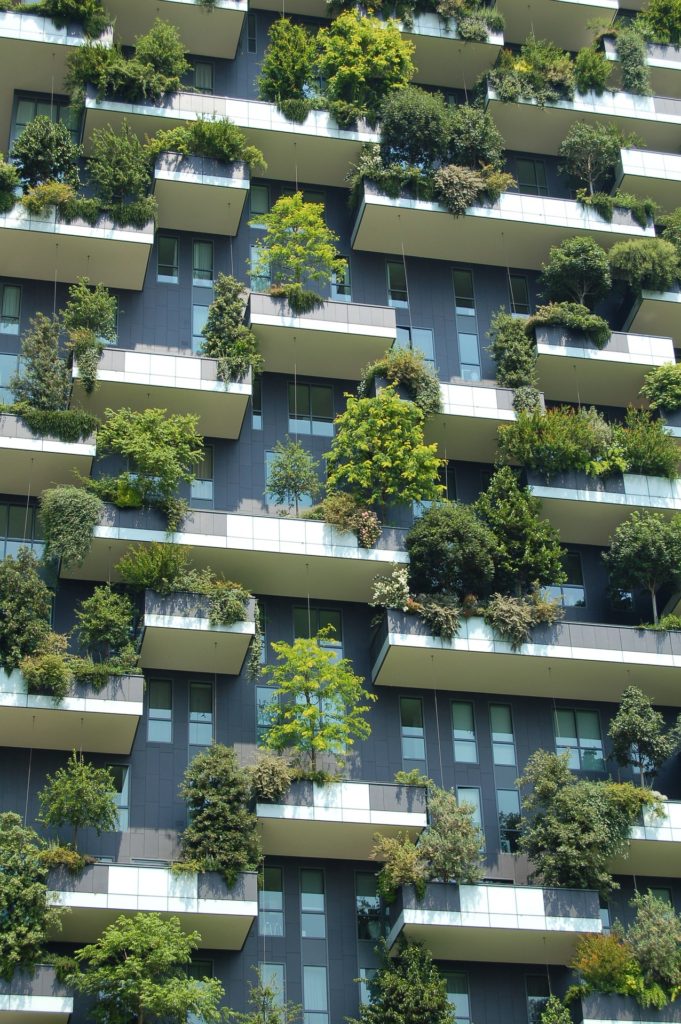
Eco Friendly and Sustainable
Everywhere you turn today you can hear people discussing and considering “going green”. Due to the rate at which we are exploiting it, our planet is not sustainable and over the years we will slowly run out of natural resources that we need to survive. So, if you’re also one of the people concerned with this fact, you should consider eco-friendly and sustainable building. However, what exactly does that mean?
What is green building?
Green building is defined as a project that preserves the environment around the building site while still producing a building that serves its intended purpose. The process of construction of such a building promotes a healthy environment for builders and residents of the object and doesn’t disrupt the land, waters and the air in and around the building. Most of the general population imagines green buildings as having solar panels, wind turbines and geothermal heating; however, those are the secondary elements of an energy-efficient building. Every green project starts with the design. Good design, insulation, and green materials are actually what makes a building sustainable.
Energy efficiency
Energy efficiency is one of the main elements of any green building design. An energy-efficient building is the one that uses minimal energy for heating, cooling, lighting and running appliances. The element that usually requires the most energy is heating, so it’s very important to concentrate on reducing heating costs and requirements. For instance, a building that has 60% of its windows facing south may have its heating costs reduced by almost 25%. On the other hand, a proper design will also reduce overheating during the summer, and reduce air conditioning requirements. So, good insulation and design should be your top priorities, because no wind turbines and solar panels will ever be as efficient.
The size
This might go without saying, but many builders and investors still make this mistake. A smaller building will always be more efficient, eco-friendly and sustainable! It requires less excavation, less material, less shipping and less heating and air conditioning. Plus, they are always cheaper to build and maintain. This doesn’t mean you have to live or do business in a shed, though. Create a good floor-plan and avoid any unnecessary additions.
Water management
It’s a fact that we are rapidly depleting the global supply of fresh water, and this could potentially have catastrophic consequences. Green buildings minimize water use by installing grey water and rainwater harvesting systems, waterless composting toilets and using low-flow toilets and aerating devices on taps. It took the developers months and months of searching for the most eco-friendly products to place in each room. They looked all over the place, to ensure that they found the best products. In the end, the managed to find all their products locally, to cut down travel costs. However, they did find so many eco-friendly companies all over the world after doing some research, from washroom services in Essex to window pane installers in California.
Use of eco-friendly construction materials
When we say “eco-friendly materials,” not many people think of concrete. But, actually, it’s one of the most natural building materials if you look at the environmental impact its production and use cause. Concrete is incredibly durable, cheap, easy to make, and it can be cast into a variety of shapes and finishes. Additionally, concrete can be reused after the demolition: concrete structures can be stripped, recycled and refurbished into new materials. Many construction companies such as TDK formwork choose to work with concrete to give their clients an opportunity to reap all these benefits. Other building materials considered to be ‘green’ are wood from sustainable forests, plants that grow rapidly (bamboo or straw), dimension and recycled stone, recycled metals, as well as some other products that are reusable, sustainable, recyclable and non-toxic.
Use of reclaimed and local materials
Reusing and buying locally is another aspect of green building. It reduces the carbon footprint, supports local producers and helps the environment. Aside from these five elements stated above, green buildings should also provide cost savings to the builder and occupants, meet the needs of the community and promote the use of local labour. Green building really has the potential to save our environment and ensure a brighter future for our children.
Article written for WhosGreenOnline.com by, Derek Lotts,
 WhosGreenOnline.com Your Online Magazine and Directory for Green Business, Product, Service and News!
WhosGreenOnline.com Your Online Magazine and Directory for Green Business, Product, Service and News!

